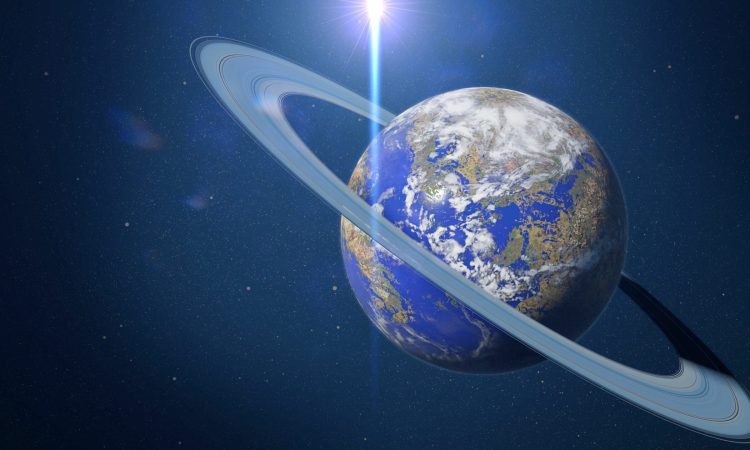
The hypothetical ring didn’t exist for long, cosmically speaking – “only” a few tens of millions of years. But it was long enough to leave a lasting imprint on Earth’s geological record, according to an analysis led by planetary scientist Andy Tomkins of Monash University in Australia.
Tomkins and his team reconstructed an unusual increase in the number of meteorite impacts, known as the “Ordovician impact peak,” determining that a slowly decaying ring in Earth’s orbit could be a plausible explanation for the anomaly. And also a lot of fun.
“I like to think about what the Earth might have looked like with a ring around it,” Tomkins told ScienceAlert, “a very different look than it does today.”
It’s a remarkable piece of detective work, and one that could, with future analysis, help explain other aspects of Earth’s history.
“Over millions of years, it gradually fell to Earth, creating the meteorite impact peak seen in the geologic record,” says Tomkins. “We also note that the sedimentary rock layers from this period contain extraordinary amounts of meteorite debris.”
Rings are considered to be quite common in the Solar System. The four giant planets have rings, and there is evidence that Mars had one as well. This begs the question: Could Earth have had a ring somewhere in its wild past?
The hypothetical ring would not have been around for long
We are unlikely to find traces of it in space, if it ever existed; but for a period during the Ordovician, nearly half a billion years ago, the impact of meteorites increased sharply for about 40 million years. There are a lot of craters that appeared during this period, very close to each other.
This close spacing is not only in time but also in location. Tomkins and his team that appeared during the peak of the impact and found that all were at a latitude less than 30 degrees from the equator.
This was not immediately obvious because during the Ordovician, all of Earth’s continents were part of a supercontinent called Gondwana, which had since broken up and drifted apart.
The grouping of craters may seem curious, but it gets even stranger. The bombardment appears to have fallen on only 30% of the exposed land mass, all in the equatorial region. So while meteorites were much more widespread than we see today, these specific impacts were confined to a small section of the globe. According to Tomkins and his colleagues, this may be exactly what happened, he writes.
A lasting imprint on Earth’s geological record
Their analysis shows that about 466 million years ago, an asteroid came right into Earth’s gravity. It wasn’t close enough to fall right off – but it was close enough to be torn apart by tidal forces, passing a limit known as the Roche limit.
For a weakly bound asteroid, the Roche limit is an altitude of about 15,800 kilometers. That’s a lower altitude than some satellites—an altitude range at which the gutted asteroid’s debris could orbit Earth in a relatively stable orbit, decaying over time.
This is consistent with what we have observed elsewhere in the Solar System. temporary butter, falling to the planet at a fairly rapid rate. We watched Comet Shoemaker-Levy 9 slam into Jupiter in 1994—but not before the planet’s gravity tore the comet apart, creating a debris field that surrounded the planet for years. So it seems highly plausible that Earth tore apart, then “ate” an asteroid, the researchers believe.
Material from this ring gradually fell to Earth
The clustering of impacts is proof. There is also a lot of meteorite material in the sediments that accumulated at the same time and period. Both clues could be linked to the same asteroid.
And there might be another clue. Toward the end of the Ordovician, about 445 million years ago, Earth entered a devastating ice age; the coldest in the last half a billion. A ring around Earth could have exacerbated this situation by casting a shadow over the surface.
This modeling would recreate the disintegration of the asteroid and the formation of the ring from its debris, followed by . This would reveal the structure and shape the ring could have had and whether it could cast a large shadow. This data should then be provided to climatologists to see what the effects might be.
But if it does have an effect, the implications are quite interesting not only for understanding our world, but also for climate interventions.
The research was published in

